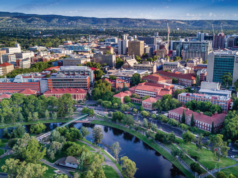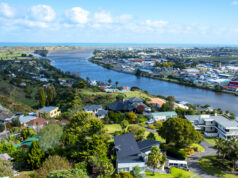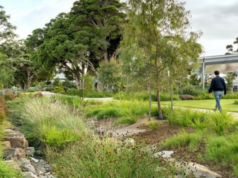By David Jenkins
A significant development in asset management practice has been the use of natural assets, which can replace traditional hard assets, or be used in parallel.
These natural solutions can come with lower capital and operating costs, can mitigate the impacts of climate change, and deliver benefits such as enhanced recreational opportunities.
The interaction of urban green infrastructure components can also help conserve biodiversity and restore ecological processes.
One of the challenges with the natural asset approach has been its valuation, and this is important because accurate valuation will be a significant factor in driving its use.
Valuing nature is challenging to measure, but accepted frameworks and standards are a critical next step in integrating the opportunity presented by natural assets into mainstream infrastructure planning.
There is already a well-established approach to grey infrastructure that involves understanding what you own, the maintenance and renewal costs, and how to factor these assets into long-term financial sustainability.
Using these traditional asset management principles, an asset accounting approach will help identify a natural asset inventory, the environmental services delivered, the risks of neglect, and the priorities and funding for their protection, restoration, and management.
Integrating green infrastructure into an asset management plan involves knowing the assets, planning their lifecycle, and securing long-term funding.
The starting point is to understand what natural assets an organisation owns, its condition, and the environmental services it provides.
This process will help assess the risk of neglecting the assets, determine their lifecycle costs, and incorporate them into the long-term planning process.
Organisations should start by compiling a comprehensive inventory of their green assets, such as trees, wetlands, and green roofs, along with their locations, sizes and functions.
The City of Marion in South Australia is a leader in this area and has created a detailed interactive online inventory of urban trees.
The inventory includes species details, watering schedules, inspections and maintenance records, and this level of detail enables the city to manage its urban forest better.
Regular assessments of the condition of the assets are also critical. This includes evaluating their health and resilience and identifying any risks or maintenance needs.
This is done regularly in the Canadian city of Vancouver, which regularly monitors the health and condition of its urban forest as a driver of maintenance and renewal planning.
It is also important to define the level of service for each asset, which will help guide decisions on maintenance and renewal.
The City of Melbourne is also paving the way in this field, and its Urban Forest Strategy includes clear service targets in areas such as canopy cover, species diversity, and tree health. This information is used to prioritise investment.
The second step is to plan the lifecycle of the green assets from acquisition to renewal based on those service levels, using this planning to develop maintenance schedules and monitor asset conditions.
The City of Marion, for example, has a rotational block pruning program. It uses information from its condition assessment in a targeted and planned way to maintain the health of its trees while also optimising maintenance costs.
Melbourne conducts a thorough analysis of lifecycle costs to ensure it can enhance its urban forest as the city grows and changes.
The third step is to secure long-term funding. This involves quantifying the value of green assets and integrating them into financial strategies, where risk can also be proactively managed.
The Canadian town of Gibsons was an early leader in using natural assets and assigns monetary values based on the cost savings they provide compared to engineered solutions.
In Melbourne, the financial plan commits to increasing canopy cover from 20% to 40% by 2040, ensuring the long-term success of the urban forest.
All these steps come together in the asset management plan, where the natural assets are integrated with hard/grey assets and do not exist separately in a silo.
Failure to incorporate green infrastructure is a missed opportunity that can result in higher financial and environmental costs.
Seizing that opportunity requires a commitment to the three-step approach, which quantifies the value of the assets and drives accurate planning and maintenance.
This can deliver sustainable growth, value and benefits to communities looking for innovative infrastructure solutions in the face of growing challenges.














